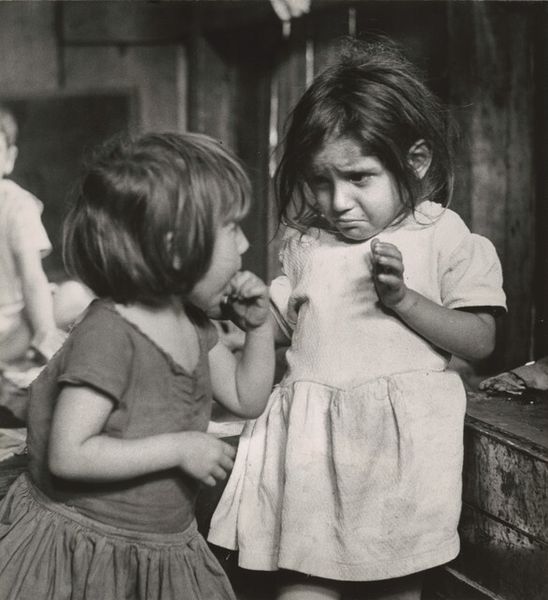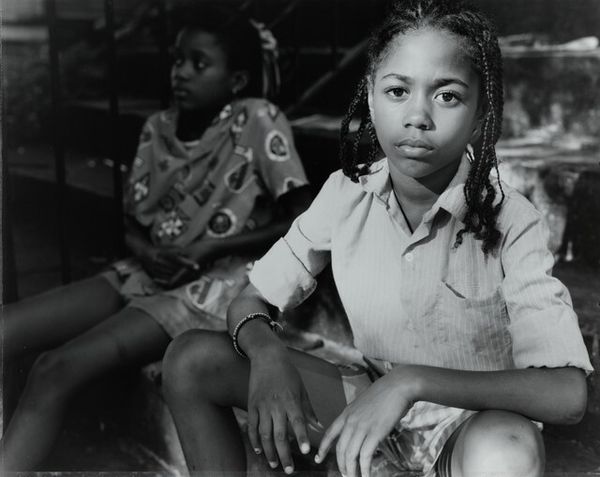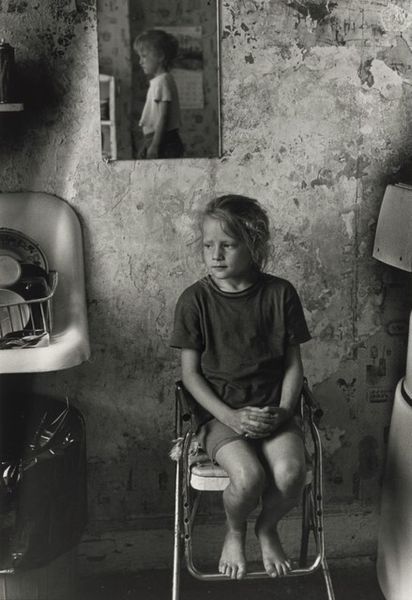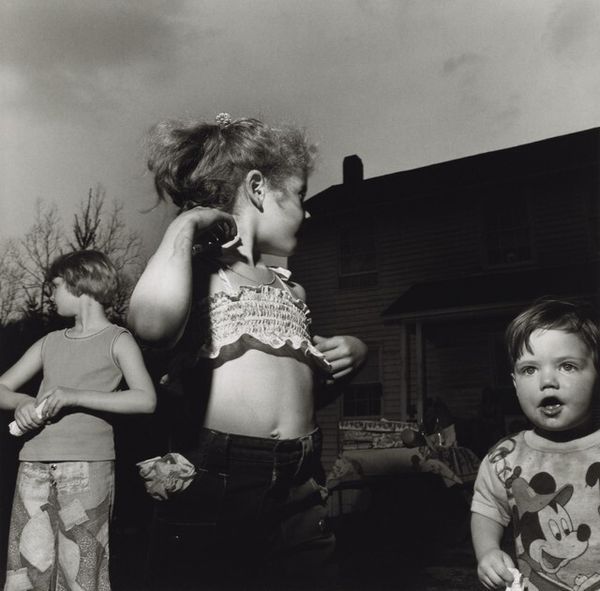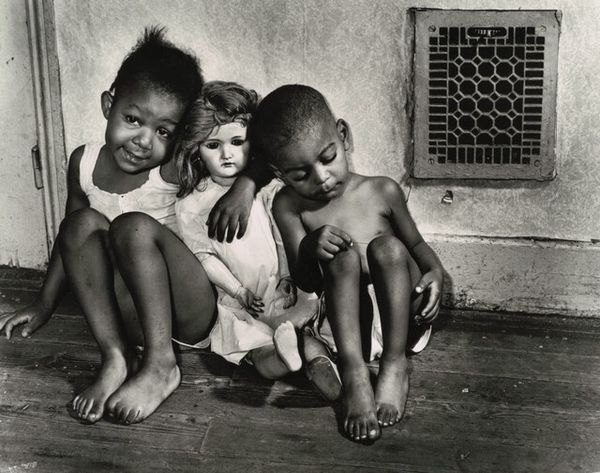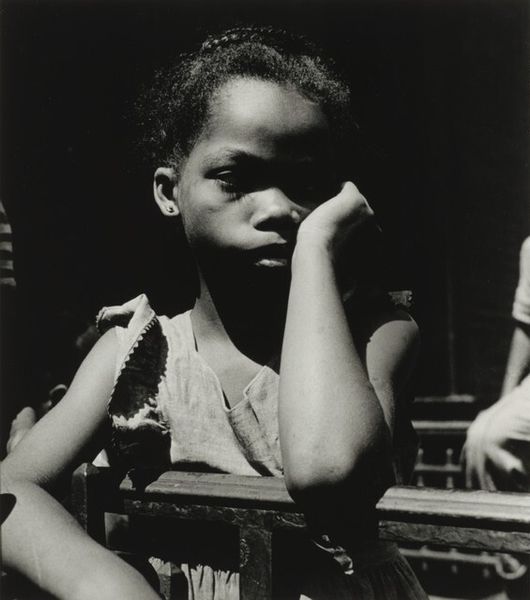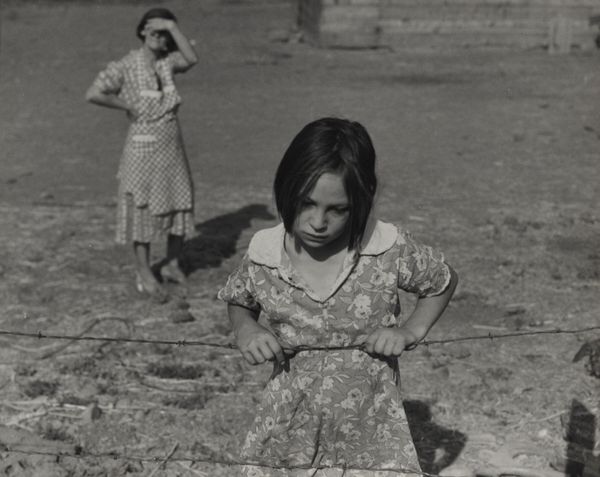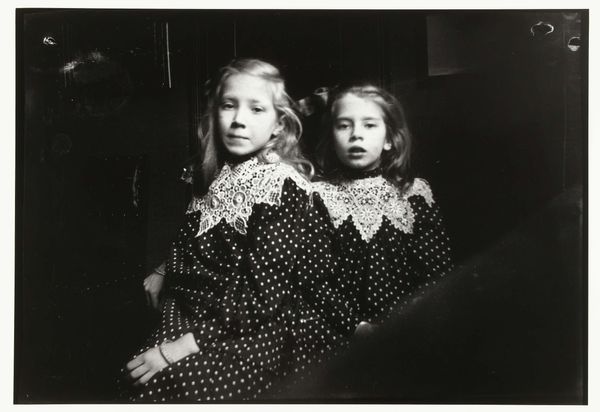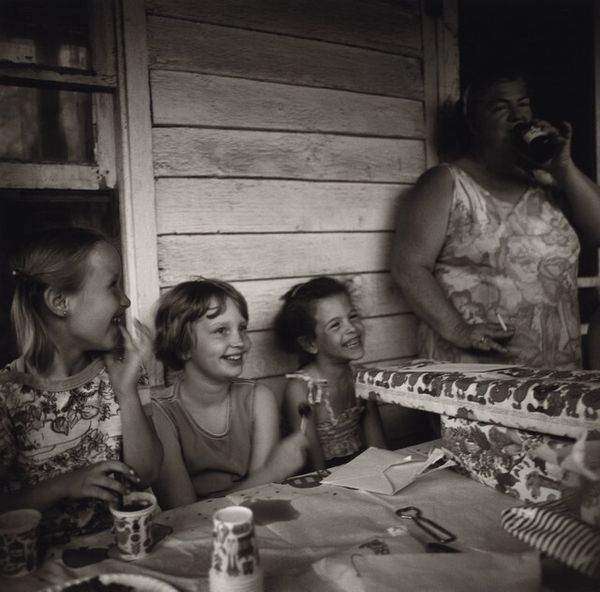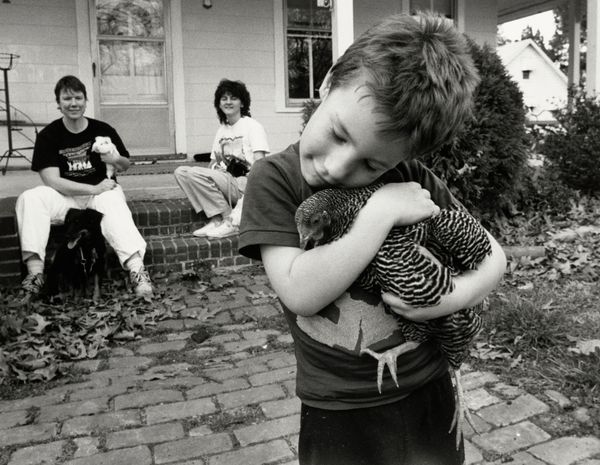
Haverstraw, New York. Interracial activities at Camp Christmas Seals, where children are aided by the Methodist Camp Service. Camp buddies after 1943
0:00
0:00
photography
#
portrait
#
african-art
#
black and white photography
#
social-realism
#
street-photography
#
photography
#
black and white
#
monochrome photography
#
monochrome
Dimensions: sheet: 27.78 × 35.6 cm (10 15/16 × 14 in.) image: 26.7 × 27.2 cm (10 1/2 × 10 11/16 in.)
Copyright: National Gallery of Art: CC0 1.0
Editor: This is Gordon Parks's photograph, "Haverstraw, New York. Interracial activities at Camp Christmas Seals, where children are aided by the Methodist Camp Service. Camp buddies," taken after 1943. It's a black and white portrait of two young girls, and something about their expressions feels… knowing. What layers do you see in this piece? Curator: Parks created this image in a very specific socio-political climate. After 1943 is late in the war years, but prior to the full swing of the Civil Rights Movement. What Parks seems to be doing is challenging segregation, visually suggesting the possibility, or perhaps even the reality, of integration in spaces of healing, like a camp for children with disabilities. Do you see how the composition, placing the two girls close together, reinforces this idea of unity? Editor: Yes, they're almost leaning on each other. And knowing it was taken after 1943 gives the photo even more weight. Curator: Exactly! The photograph operates as a quiet act of resistance. Parks is using the camera to dismantle social norms, highlighting the shared humanity of these children during a time of intense racial division. Look at their faces; they don't reflect the prejudices of the adult world. Editor: It makes me wonder about the impact of the camp itself. Was it truly an integrated space, or was Parks offering a glimpse of something aspirational? Curator: That tension is crucial. Parks isn’t presenting a utopian vision but a moment of potential. By showing interracial friendship, he implicitly critiques the discriminatory structures of the time. This image encourages us to consider how institutions and individual interactions can challenge or perpetuate inequality. Editor: I hadn’t thought about it that way. Now I see that Parks’ photo does more than just document a moment. It challenges the status quo. Curator: Precisely. Parks is not merely a photographer, but a social commentator. His work compels us to critically examine the relationship between art, activism, and social change. Editor: This has completely reshaped how I understand the image! Thanks.
Comments
No comments
Be the first to comment and join the conversation on the ultimate creative platform.
